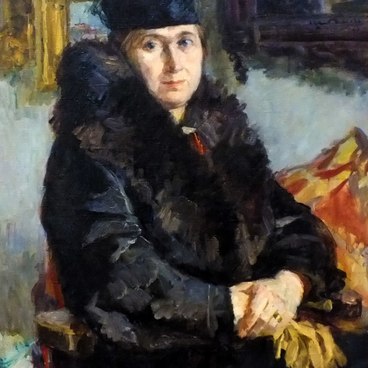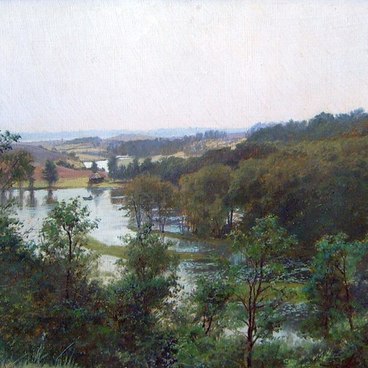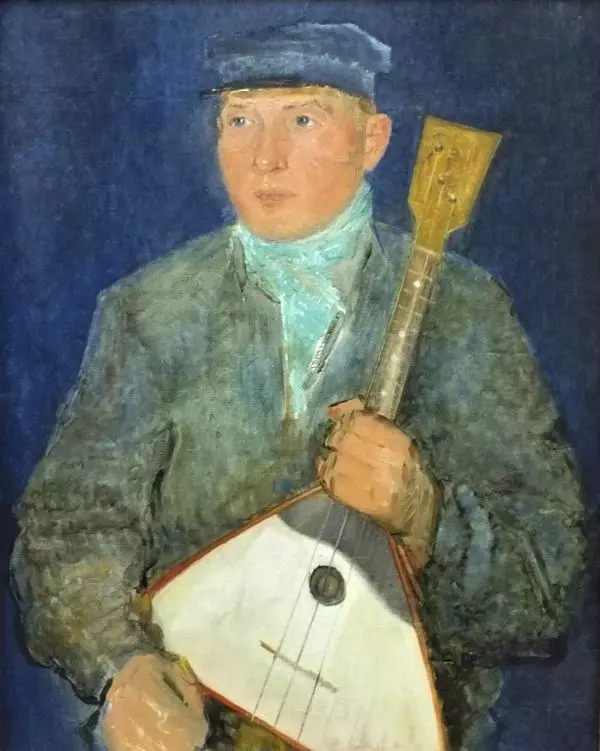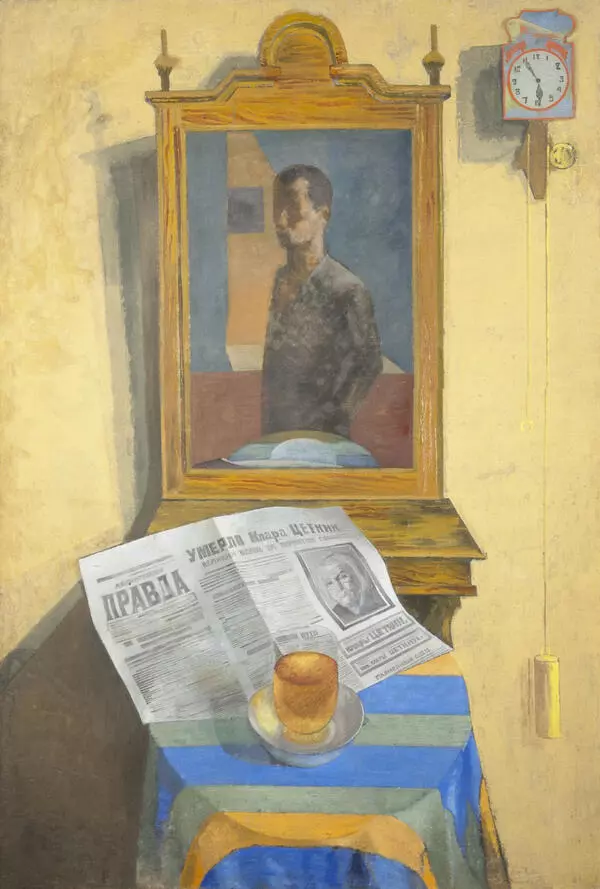The Artist Vladimir Malagis is best known as a portraitist who left behind a great legacy of images of Soviet-era builders. His works with images of veterans, collective farmers, workers, scientists and artists are placed in many museums and private collections in Russia and other countries. But portraits were not the only direction of Malagis’s work, among his pictures there are several genre paintings and still-lifes.
The painting Still Life with a Bun was created towards the end of the early stage of the artist’s work, when the passion for Cubism and Futurism art, that influenced his formation as an artist, started to wane. During this period, he turned his attention to figurativeness, that was adhered to by the members of art associations ‘Circle of Artists’ and OST — Society of Artists and Stanists. Figurative painting, or figurative art is a direction innovative for the mid-20s of the last century period characterized by the intention to depict objects close to what they look like in reality.
Still Life with a Bun also reflects the influence of Malagis' teacher Kuzma Petrov-Vodkin, in whose workshop he had completed his artistic education a year before producing the painting.
This painting is simple, though symbolic. In Still Life with a Bun, Malagis painted products from the daily ration of the creative elite. The picture is not only a kind of ‘document of life’. It contains an element of creative polemic in a way. The label for cigarettes ‘Soviet’, depicted next to bread, was designed by another Leningrad artist — Alexander Zelensky, who at that time held the position of chief artist in the Leningrad State Tobacco Trust. This painting can be interpreted as a visual message from one artist to another.
Complex symbolic content is a distinctive feature of Vladimir Malagis’s still-lifes. A year earlier, he made a still life entitled Mournful, which is now part of the collection of the State Russian Museum. The picture shows bread and lemon next to the four-folded newspaper Petrogradskaya Pravda with a fragment of the phrase “Vladimir Ilyich died on January 21 at 6 o”clock…” and notes of the song “You have fallen victim”. So the artist honored the memory of Vladimir Lenin, who died in 1924 near Moscow.
The painting Still Life with a Bun was created towards the end of the early stage of the artist’s work, when the passion for Cubism and Futurism art, that influenced his formation as an artist, started to wane. During this period, he turned his attention to figurativeness, that was adhered to by the members of art associations ‘Circle of Artists’ and OST — Society of Artists and Stanists. Figurative painting, or figurative art is a direction innovative for the mid-20s of the last century period characterized by the intention to depict objects close to what they look like in reality.
Still Life with a Bun also reflects the influence of Malagis' teacher Kuzma Petrov-Vodkin, in whose workshop he had completed his artistic education a year before producing the painting.
This painting is simple, though symbolic. In Still Life with a Bun, Malagis painted products from the daily ration of the creative elite. The picture is not only a kind of ‘document of life’. It contains an element of creative polemic in a way. The label for cigarettes ‘Soviet’, depicted next to bread, was designed by another Leningrad artist — Alexander Zelensky, who at that time held the position of chief artist in the Leningrad State Tobacco Trust. This painting can be interpreted as a visual message from one artist to another.
Complex symbolic content is a distinctive feature of Vladimir Malagis’s still-lifes. A year earlier, he made a still life entitled Mournful, which is now part of the collection of the State Russian Museum. The picture shows bread and lemon next to the four-folded newspaper Petrogradskaya Pravda with a fragment of the phrase “Vladimir Ilyich died on January 21 at 6 o”clock…” and notes of the song “You have fallen victim”. So the artist honored the memory of Vladimir Lenin, who died in 1924 near Moscow.






